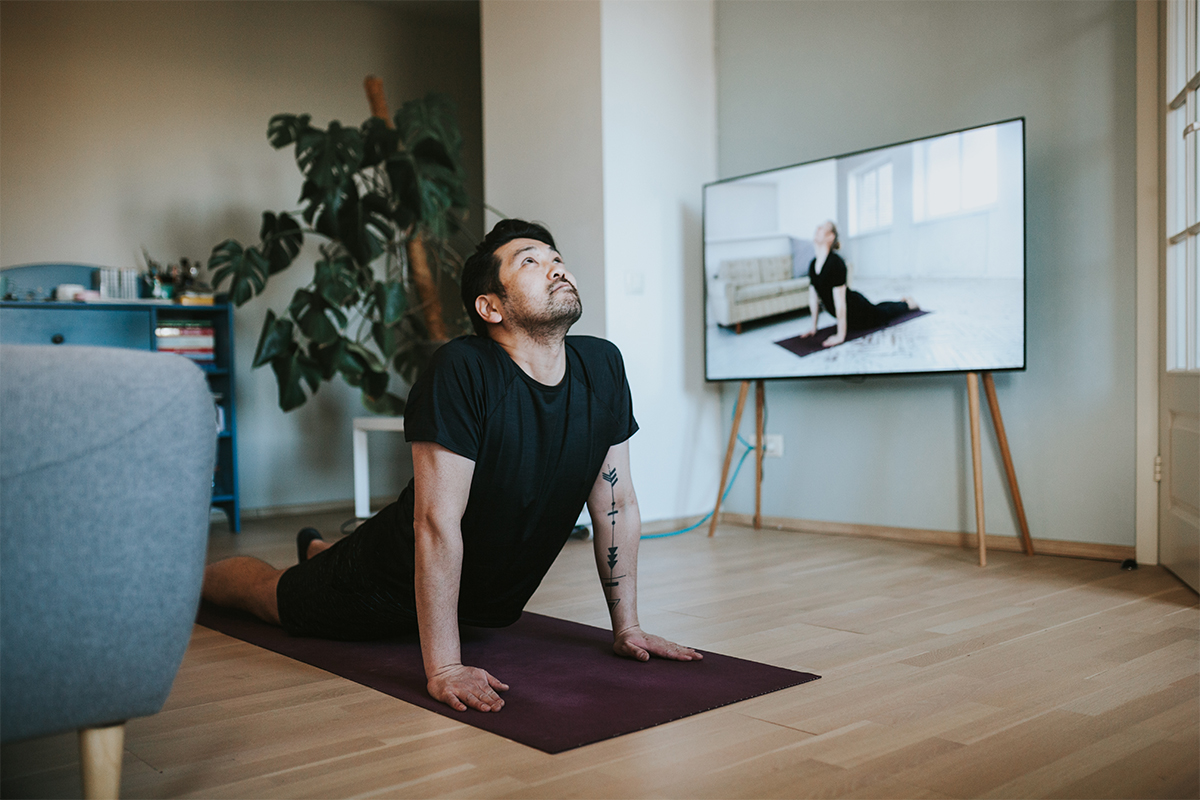Discover Your Purpose
Four steps to help you unlock a life of genuine fulfillment.

Even if you have never been a seafaring person, you can probably conjure, in your mind’s eye, what it might be like to be lost at sea and rudderless. Imagine being cast about by enormous waves, with no land in sight, despair and doubt closing in fast, given all that your plight portends for your body, mind and relationships. This is what it’s like to journey through life with no defined purpose to propel, protect and guide you. A life lit by purpose provides access to clarity during troubled times and offers meaning in the face of futility.
Purpose is not a magic genie that changes misery into bliss with a snap of the fingers. Quite the opposite. Discovering your purpose will require you to choose courage over comfort and commitment over compromise. But the result of leading a purpose-lit life is fulfillment. It’s not the fulfillment that comes from acquiring things you can lose or accomplishing external successes, many of which rely on elements beyond our control (like promotions, awards or other forms of recognition). The fulfillment you will derive from a purpose-lit life cannot be gifted to you or taken away; it is uniquely yours, and it will foster a deep sense of resilience and personal understanding, resulting in a vibrant, peaceful sense of well-being.
Discover, Define and Deploy Your Purpose
A generally accepted definition of purpose is a long-term, forward-looking intention to accomplish aims that are meaningful to the self and of consequence to the world beyond the self (Damon 2009). A good way to start this process is by unpacking what a purpose is not.
First, your purpose is not someone else’s; it’s yours, and, as such, it must begin with you. Your purpose cannot be downloaded or installed. You don’t find your purpose; you uncover and discover it. Your purpose is not your expertise, your marital status or your job. If you can be fired or retired from it, or if it can be taken away from you, it’s not your purpose.
Neither is your purpose your passion or what you love. You may think, “Hey, wait a minute, if I do what I love, what I am passionate about, isn’t that the key to happiness?” Being passionate, doing what you love and finding happiness are important; there is a relationship between purpose and feeling good. However, living purposefully will lead to—and through—adversity. Purpose is not the fruit of doing what you love; purpose is the tree you must nurture into strength until its branches hang heavy with the fruit that is your happiness, love and passion. Purpose creates values, which guide and inform behavior. Purpose provides meaning, lending shape and sense to life.
Your passion, love and happiness will be integrated and utilized in uncovering your purpose and then crystallized in your purpose sentence.
See also: A Life With Meaning
4 Steps to Uncover Your Purpose

Your purpose will be expressed in a sentence, infused with your uniqueness, providing you access to the special gift you bring to the world.
As you begin the process of discovering your purpose by working through the four steps that follow, set an intention to invest time and thoughtful reflection into each step. Dive into a step, get into action and then step out. Percolate on the step, thinking about it at various times of day and in various locations. Where are you most contemplative and thoughtful? On a long run or car ride?
If you are fiercely open and honest with yourself through this process, you may open the door to a fuller way of living. Your purpose will be expressed in a sentence, infused with your uniqueness, providing you access to the special gift you bring to the world.
1. Remember a Few Exceptional Events You Experienced as a Kid
Transport yourself back to when you were a child and revisit two or three moments that were exceptional, filling you with joy and satisfaction. For each moment, answer these questions:
- What was the particular action or activity you were doing in this moment? As you write about the experience, step into it fully, becoming immersed in the details.
- Who was there, if anyone? Where did it take place? What time of day was it, and what year? Resurrect the smells, sounds and atmosphere.
- What were you feeling be-fore the moment and after it? Slip the experience on as if you were slipping on a favorite piece of comfortable, familiar clothing. Visualize the moment or get a felt sense of it.
- What emotions do you connect to this event? Which of your strengths do you associate with it?
2. Recall Your Nietzsche Moments
Friedrich Nietzsche, the 19th century philosopher, famously said, “That which does not kill us makes us stronger.” During our most challenging moments, our purpose makes itself known, keeping us afloat and eventually guiding us through to the other side.
- Write about two or three of your most challenging moments in life, not current challenges or ones that are still gripping you in any way.
- For each challenging moment, tell your story, beginning with what happened and what it was like, and then describing how it is for you now.
- Seek out and define your gifts and strengths, as revealed through these moments.
3. Reflect on Moments of Joy and Flow
Review your life journey for joy and flow moments. Authentic joy springs from within and is not contingent on external factors like money, recognition and so on. Joy is uniquely yours and does not need to be attached to a skill or have a particular effect on the world.
Flow occurs when you are completely absorbed in an activity, especially an activity that involves your creative abilities. During such an optimal experience, you feel strong, alert, in effortless control, unselfconscious and at the peak of your abilities (Csikszentmihalyi 1990).
- Capture these moments in writing and explore fully what you were experiencing at these times.
- Pay special attention to unearthing and understanding your flow moments.
See also: Cultivate Joy Through Mindfulness
4. Define Your Purpose in a Sentence
Leveraging what you have uncovered and understood about yourself in the first three steps, begin to shape your purpose sentence. Your purpose sentence need only make sense to you. Avoid the common pitfall of shaping it as though it were a client-facing mission statement.
Your purpose sentence doesn’t even need to be a sentence; it can be an icon or a logo. The key is to ensure that it awakens, ignites and unlocks that special something inside you—your purpose.
- List key words and strengths you uncovered in the first three steps and reflect on why you chose those factors.
- Write your sentence and then look for elements that connect to your exceptional kid moments, Nietzsche moments, and joy and flow moments.
- Remember that you can-not be fired or retired from your purpose, nor can it be taken away from you. Ensure that your purpose sentence reflects these critical truths.
Deploying Your Purpose
A discovered and defined purpose is like an umbrella in the pouring rain; it’s only of value if it’s deployed. Will you stand in the rain and wonder about being soaked, or will you choose to deploy your purpose? Step into a life lit by purpose—a life of fulfillment that is uniquely yours.
See also: The Power of Connection in the Age of Social Distancing
Purpose in Action
Michelle Young, MEd, CEO of My Vinyasa Practice, has been living a purpose-powered life for 7 years.
“I look back at how I was living before,” she says, “and I didn’t really know what my values were. I thought they were being a good mom and wife. [Living your purpose is] not about looking for validation from others. While I am open to hearing others, I can’t be propelled by what others think and say.”
Young says her purpose is “to uplift the collective consciousness and make wisdom teaching accessible.”
She adds, “When I began living by my purpose, I was quickly tested in several ways, and I stuck with it.”
One way she has expressed her purpose is by structuring her business to provide Yoga Alliance–accredited teacher training.
In this context, offering “accessibility to wisdom teaching” meant making this training readily available and affordable. In the past year, while many in the yoga teacher training industry have struggled or closed because of the COVID-19 pandemic, Young has thrived nationally and internationally. Why? Guided by her purpose, she had priced her teacher training well below other offerings and was already leveraging online training/education.
Because Young has stayed true to her purpose through many trials and strong opposition, her key value of accessibility has unlocked a life of fulfillment, a purpose-lit life.
What Does Research Say?
An emerging body of research indicates that purpose in life is linked with a variety of healthy behaviors and with better mental and physical health (Kim, Hershner & Strecher 2015). A connection between purpose in life and healthy behaviors, outcomes and longevity is encouragingly demonstrated in older adults. For example, a study published in JAMA found that a stronger purpose in life was associated with lower all-cause mortality in adults older than 50 (Alimujiang et al. 2019).
Purpose in life is being recognized as a modifiable factor that may play an important role in maintaining physical function among older adults. Recent research has shown an association between a higher sense of purpose in life and greater engagement in healthier behaviors (e.g., more physical activity, use of preventive health screening) (Hooker & Masters 2016; Kim, Strecher & Ryff 2014); better biological functioning (e.g., reduced allostatic load) (Zilioli et al. 2015) ; reduced risk of disease (e.g., lower risk of cardiovascular disease and cognitive impairment) (Kim et al. 2013; Boyle et al. 2010); and a lower risk of earlier death (Boyle et al. 2009; Alimujiang et al. 2019).
Additionally, research is moving to study the association between purpose in life and objective physical functions. One study identified grip strength and walk speed in older adults as robust factors associated with survival—and demonstrated higher purpose-in-life scores with greater grip strength and faster walk speed, although results did not reach statistical significance for grip strength (Kim et al. 2017).
Interestingly, research reveals strong correlations between purpose in life and such quantifiable outcomes as hormone and protein levels. Purposeful living is associated with decreased expression of pro-inflammatory genes. A study revealed that stronger life purpose was linked with lower cortisol levels and lower levels of pro-inflammatory cytokines (Fredrickson et al. 2013).
Perhaps surprisingly to some, orthopedic surgical outcomes are another area affected by a person’s understanding and use of purpose in life. Among people with severe osteoarthritis who underwent full knee replacement, those with higher purpose-in-life scores prior to surgery reported less functional disability and stiffness in the knee, as well as less anxiety, during recovery (Smith & Zautra 2004).
References
Alimujiang, A., et al. 2019. Association between life purpose and mortality among US adults older than 50 years. JAMA Network Open, 2 (5), e194270.
Boyle, P.A., et al. 2009. Purpose in life is associated with mortality among community-dwelling older persons. Psychosomatic Medicine, 71 (5), 574–79.
Boyle, P.A., et al. 2010. Effect of a purpose in life on risk of incident Alzheimer disease and mild cognitive impairment in community-dwelling older persons. Archives of General Psychiatry, 67 (3), 304–10.
Csikszentmihalyi, M. 1990. Flow: The Psychology of Optimal Experience. New York: Harper Perennial.
Damon, W. 2009. The Path to Purpose: Helping Our Children Find Their Calling in Life. Free Press.
Fredrickson, B.L., et al. 2013. A functional genomic perspective on human well-being. Proceedings of the National Academy of Sciences, 110 (33), 13684–89.
Hooker, S.A., & Masters, K.S. 2016. Purpose in life is associated with physical activity measured by accelerometer. Journal of Health Psychology, 21 (6), 962–71.
Kim, E.S., et al. 2013. Purpose in life and reduced risk of myocardial infarction among older US adults with coronary heart disease: a two-year follow-up. Journal of Behavioral Medicine, 36 (2), 124–33.
Kim, E.S., et al. 2017. Association between purpose in life and objective measures of physical function in older adults. AMA Psychiatry, 74 (10), 1039–45.
Kim, E.S., Hershner, S.D., & Strecher, V.J. 2015. Purpose in life and incidence of sleep disturbances. Journal of Behavioral Medicine, 38 (3), 590–97.
Kim, E.S., Strecher, V.J., & Ryff, C.D. 2014. Purpose in life and use of preventive health care services. Proceedings of the National Academy of Sciences, 111 (46), 16331–36.
Smith, B.W., & Zautra, A.J. 2004. The role of purpose in life in recovery from knee surgery. International Journal of Behavioral Medicine, 11 (4), 197–202.
Zilioli, S., et al. 2015. Purpose in life predicts allostatic load ten years later. Journal of Psychosomatic Research, 79 (5), 451–57.






